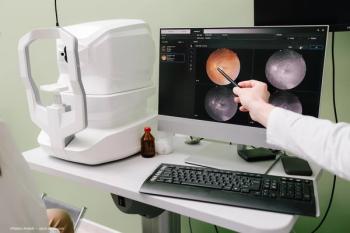
Part 4: Looking back at 50 years of innovation in ophthalmology
To mark Ophthalmology Times' 50th anniversary, we invited top experts to reflect on the most significant innovations in ophthalmology over the past five decades.
In celebration of Ophthalmology Times' 50th anniversary, we asked leading experts in the field what they see as the biggest innovation in ophthalmology in the past 5 decades.
Video Transcript:
Editor's note: The below transcript has been lightly edited for clarity.
Anat Loewenstein, MD:
In the recent decade or 2 decades, we have had a huge, huge, huge breakthrough in the management of patients with diabetic macular edema in the form of anti-VEGF drugs and also slow-release devices that can release other drugs in a very controlled manner. I think the development of anti-VEGF drugs completely changed the way we manage our patients with DME. Nowadays, with the development of more advanced treatments that have either higher doses or another mode of action, patients can achieve longer duration intervals between injections, an effect that will bring another breakthrough in their management.
Dimitra Skondra, MD, PhD:
The introduction of the anti-VEGF agents really revolutionized the field, and it saved blindness in millions of patients around the world. And also the development of imaging, like OCT in particular, that can actually understand that this is better to see the treatment effects and diagnose them earlier. So there's no question for me; if I have to pick 2, it'sthe anti-VEGF introduction and the OCT introduction in the last 50 years. Of course, the gene therapy as a proof of concept, but I think the gene therapy was just starting to scratch the surface. We need to think of more inclusive ways that make it not practical to have a gene therapy for every single gene mutation. We need to think of more agnostic approaches, and some new, exciting things [are] coming up. So I think in the next 50 years, it will be gene therapy, but in a more agnostic way that is more widely available and applicable.
Cameron Cummings:
I will admit, I'm relatively new to the field. I'm just sort of exploring it. From what I can tell, I think that advancements in injection therapies for conditions like glaucoma have been, advancements in those have been extremely beneficial and are an exciting area of research. I think that also, as with many fields, the advent of AI for screening data analysis will accelerate the field as much as it has with others.
Barsha Lal, PhD:
I think optical coherence tomography is one of the best inventions in the last, say, 10 to 20 years. It is letting us to image the entire backup part of the eye in very high resolution. We are able to see up to the sclera using some devices. So I think that would be the biggest invention.
Newsletter
Don’t miss out—get Ophthalmology Times updates on the latest clinical advancements and expert interviews, straight to your inbox.













































